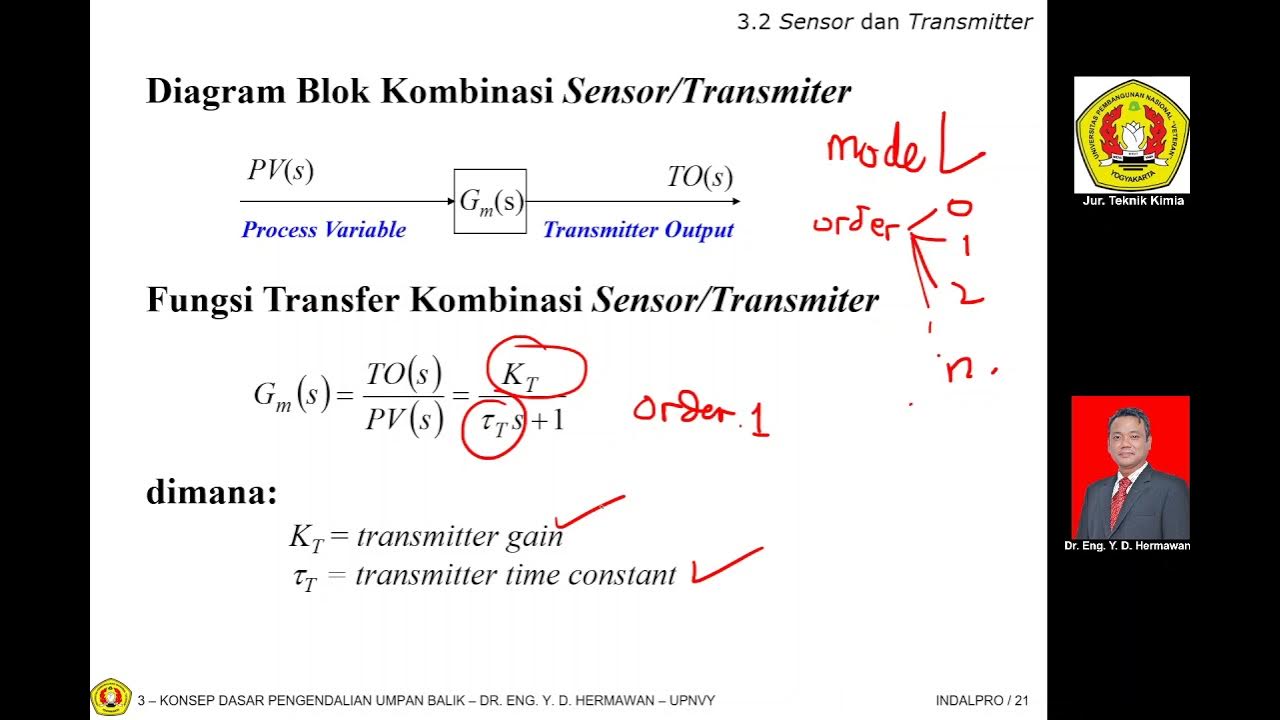Electromechanical Energy Conversion - Introduction (Part 2)
Summary
TLDRThis lecture continues the discussion on the single excited linear motion relay system, focusing on the electromechanical energy conversion process. The speaker explains how the movement of the relay's moving part towards a C-shaped magnet affects the air gap distance, current, and inductance. The process is divided into four sections, highlighting the transient and steady-state periods of current change. The lecture also introduces key equations for energy balance, mechanical power, and the behavior of linear and non-linear magnetic circuits, providing a foundation for understanding relay system modeling.
Takeaways
- 🔋 The lecture continues the discussion on the operation of a single-excited linear motion relay system, focusing on the graphical explanation of the system's behavior.
- 📉 As voltage is applied, the air gap distance decreases from an initial distance (x1) to a final position (x2), with the force (Fm) increasing until the moving part reaches the C-shaped magnet.
- ⚡ The current initially increases with the application of voltage due to low inductance, then decreases as the air gap reduces and inductance increases, stabilizing at a later time.
- 🧲 Changes in magnetic field linkage cause back EMF, which in turn reduces the current during the transient period of movement until the moving part reaches position x2.
- ⏱️ The period of changing inductance and current is called the transient period, while the period of constant current is called the steady-state period (section D).
- 🚀 Electromechanical energy conversion primarily occurs during the transient period when the inductance is changing, specifically during the mechanical movement.
- 🔄 The energy conversion process divides the electrical input power into three parts: mechanical power, the rate of change in stored magnetic field energy, and power losses.
- 📊 The energy balance equation shows how changes in electrical energy translate to changes in mechanical energy and stored magnetic energy during both motoring and regeneration operations.
- 🔧 The relay system can be modeled using inductance (L) which is a function of the air gap distance (x) and the permeability (μ), depending on whether the magnetic system is linear or non-linear.
- 🧮 The voltage equation for a relay system with changing inductance includes an additional term due to the inductance varying with linear movement (x), illustrating the system's dynamic nature.
Q & A
What is the primary focus of the lecture?
-The lecture focuses on explaining the operation of a single excited linear motion relay system, particularly the graphical representation of the moving part's interaction with a C-shape magnet and the energy conversion process.
What is the variable 'x' representing in the context of the lecture?
-In the lecture, the variable 'x' represents the air gap distance between the moving part and the C-shape magnet.
How does the force 'fm' change as the moving part approaches the C-shape magnet?
-The force 'fm' starts at 0 when the air gap distance 'x' is at its initial value 'x1'. As the voltage is applied, 'fm' increases until the moving part reaches the C-shape magnet at 'x2'.
What happens to the current when the voltage is first applied?
-When the voltage is first applied, the current increases rapidly due to the small inductance at the beginning. This current causes changes in the magnetic field, which in turn produces force on the moving part, initiating its movement.
Why does the current start to reduce as the moving part approaches the C-shape magnet?
-The current starts to reduce because as the air gap distance 'x' decreases, the inductance increases. This causes a high rate of change in the magnetic field linkage, which produces enough back EMF to reduce the current.
What is the significance of dividing the graph into sections A, B, C, and D?
-Dividing the graph into sections A, B, C, and D helps to explain the response of the current at different stages of the moving part's approach to the C-shape magnet, illustrating the transient and steady-state periods of the system.
What is the 'transient period' mentioned in the lecture?
-The 'transient period' is the time during which the current and magnetic field linkage are changing. It is also when the electromechanical energy conversion process occurs, specifically during the mechanical movement.
How is the electrical input power transferred during the electromechanical conversion process?
-The electrical input power is transferred into three parts: mechanical power (force and linear displacement), rate of change in field energy (increase in magnetic field linkage), and power loss.
What is the energy balance equation mentioned in the lecture?
-The energy balance equation is a differential equation that represents the relationship between the rate of change in electrical energy, mechanical energy, and field energy during the motoring operation.
How can the relay electromechanical system be modeled?
-The relay electromechanical system can be modeled by an inductance 'L', which varies with the linear movement or air gap length 'x'. The voltage equation of such a magnetic circuit includes an additional term 'i dL/dt' due to the changing inductance with respect to 'x'.
What is the difference between a linear and non-linear magnetic system in the context of this lecture?
-In a linear magnetic system, the inductance is a constant value, and the voltage equation can be simplified. In a non-linear magnetic system, the inductance is a function of both 'x' (air gap length) and permeability 'mu', leading to a more complex voltage equation.
Outlines

This section is available to paid users only. Please upgrade to access this part.
Upgrade NowMindmap

This section is available to paid users only. Please upgrade to access this part.
Upgrade NowKeywords

This section is available to paid users only. Please upgrade to access this part.
Upgrade NowHighlights

This section is available to paid users only. Please upgrade to access this part.
Upgrade NowTranscripts

This section is available to paid users only. Please upgrade to access this part.
Upgrade NowBrowse More Related Video
5.0 / 5 (0 votes)





